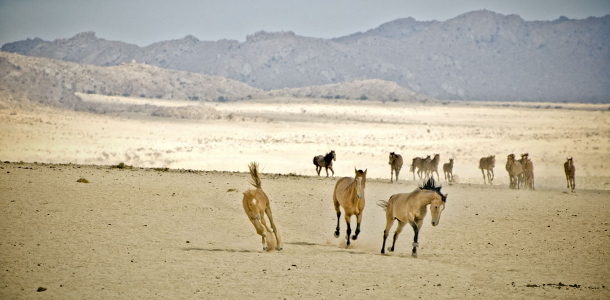
It’s ironic that on a photographic quest to capture the spirit of freedom, Miona Janeke’s three-week photographic expedition into the Namib Desert evolved into a seven month journey in which the young photographer describes herself as mesmerized and bound by the soul and character of that unmistakable landscape. In her new exhibition Horses of the Golden West, Janeke’s offers glimpses of from that journey that document the enthralling existence of these untamed animals on the dusty plains of the Namibia. She spoke to us about her experience and why Horses of the Golden West was a project she felt so compelled to do.
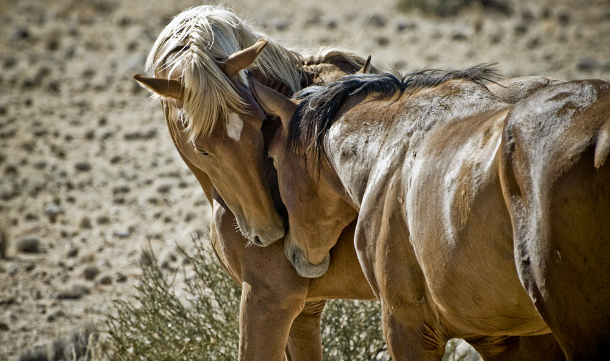
Horses have been a part of your life since you were a child, but how did you become interested in the wild horses of Namibia? Why did you choose them as photographic subjects and what is it about the horses that you felt drawn to as a photographer?As a child, growing up on our farm in Ladismith, KwaZulu Natal, I spent all my childhood on horseback. My grandfather was a great horseman and used to tell me stories about horses, in particular, the mysterious horses of the Namib desert. Ever since, it has been my dream to go and find them. When I finished my BA Applied design degree from the Stellenbosch Academy of photography and design, I realised that nature photography is my great passion! I once again remembered the horses of my childhood dreams and started to plan my trip. Reading up on the Namib horses and their origin, I realised that they are true survivors. It can only be speculated how they landed up in the desert and even more amazingly, how they survived for so long. For over 90 years they have lived in isolation in a diamond area, surviving harsh desert conditions.Can you tell us a bit more about your trip - what was your route through Namibia and where did you find the horses?All I knew was that the horses are in the south of Namibia. I traded in my Polo city car for a small Nissan bakkie and packed my camping gear, lots of extra water cans and food supplies and drove from Cape Town to cross at Vioolsdrift. On the Orange River, I stayed over at Umkulu river rafting camp (which belongs to a friend of mine). Hennie Prinsloo, owner of Umkulu, has been traveling Africa for years, it was there around his camp fire, that he explained to me where the horses were. About 20km from Aus on the way to Luderitz. Altogether, I have spent almost a month camping at the campsite of the Klein Aus Vista lodge, divided between 2 trips to Namibia to get the photos I needed. I visited Luderitz, and the ghost town of Kolmanskoppe a few times. I made my way north to Sesriem, Sossusvlei, Swakkop, Skeleton Coast, Twyfelfontein, Etosha Park and down to Windhoek. I spent some time in Windhoek where I met some amazing people who has supported and encouraged me non stop. Especially Joe (Joachem Gross) from Joe's Beerhouse.
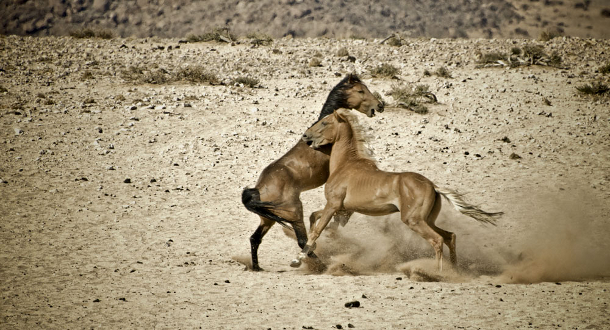
What was a typical day of photographing like for you in Namibia?While camping close to the horses, I was mostly alone, except for the odd couple of tourists also camping there for a night or so. Photos were taken at first light and at dusk for lighting purposes. During the day was the only time to make sure my cooler bag had enough ice for my food to stay cold. Did some hiking in the area and exploring. So before first light every morning, I got up to get the fire going and boil some water for coffee. As soon as the coffee was down, I would be in the car, on my way to find the horses. Some mornings they would be by the waterhole, some mornings, I would catch them still on their way, by the road. In the late afternoons, the other groups would come to drink. During the day was scorching hot, so sometimes days would feel like weeks and the cool evenings were a blessing, enjoying my campfire and cooking my food on the coals under millions of stars.
I saw the thirst in their eyes and the burning desire to survive. I was looking for the spirit of freedom and found it here, within the wild horses of the Namib Desert.
This was your first foray into nature photography – can you tell us a bit about some of the practical challenges that the medium and subject matter presented? What was the most difficult thing about capturing these photographs?There are many challenges to nature photography and this project in particular. That is what makes it so amazing to do. The isolation is both a challenge and a blessing. You can't just go out and photograph these animals, they are not exactly close to anything. Is becomes a journey and an expedition and when you get home and realise you missed a shot, you either have to make peace with it, or go back. So a lot of planning is required, not just physically in terms of equipment, but also what you want to accomplish with your photos. Angles, compositions, story lines (if applicable), themes and so much more is extremely important.
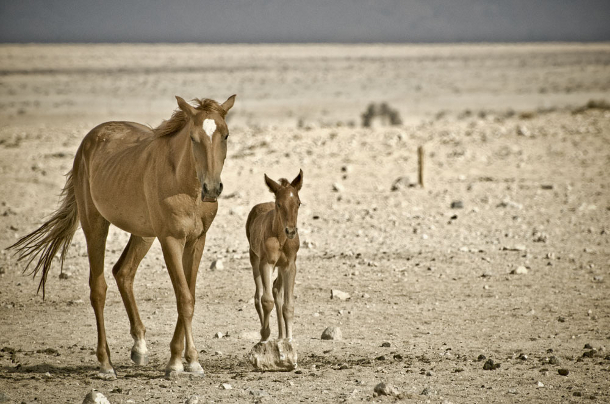
Can we look forward to more nature photography from you, and will your future projects also feature horses?I have many dreams that I would like to turn into goals, and horses will always feature in my photography. I would love to travel to countries that have their own wild/feral horses like France, Mongolia and even USA. My next goal is to photograph the Desert Elephants of Namibia. They are threatened and, through my photography, I would like to bring awareness and donate some of my proceeds to the Desert Elephant Fund. I am not only a nature/wild life photographer, but also incredibly conservation orientated. I do some charity work for conservation organisations and try involving myself to help where I can.
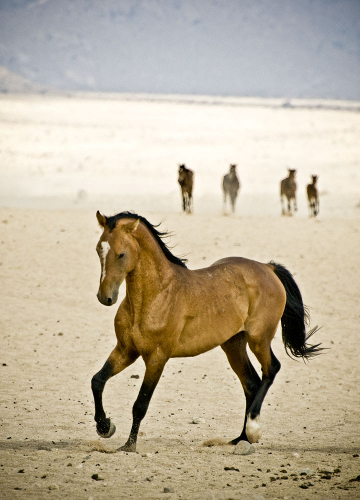
Miona Janeke's exhibition Horses of the Golden West is on at the Wilkinson Photographic Studio in Johannesburg from 15-28 March 2012.
(All pictures © Miona Janeke)

